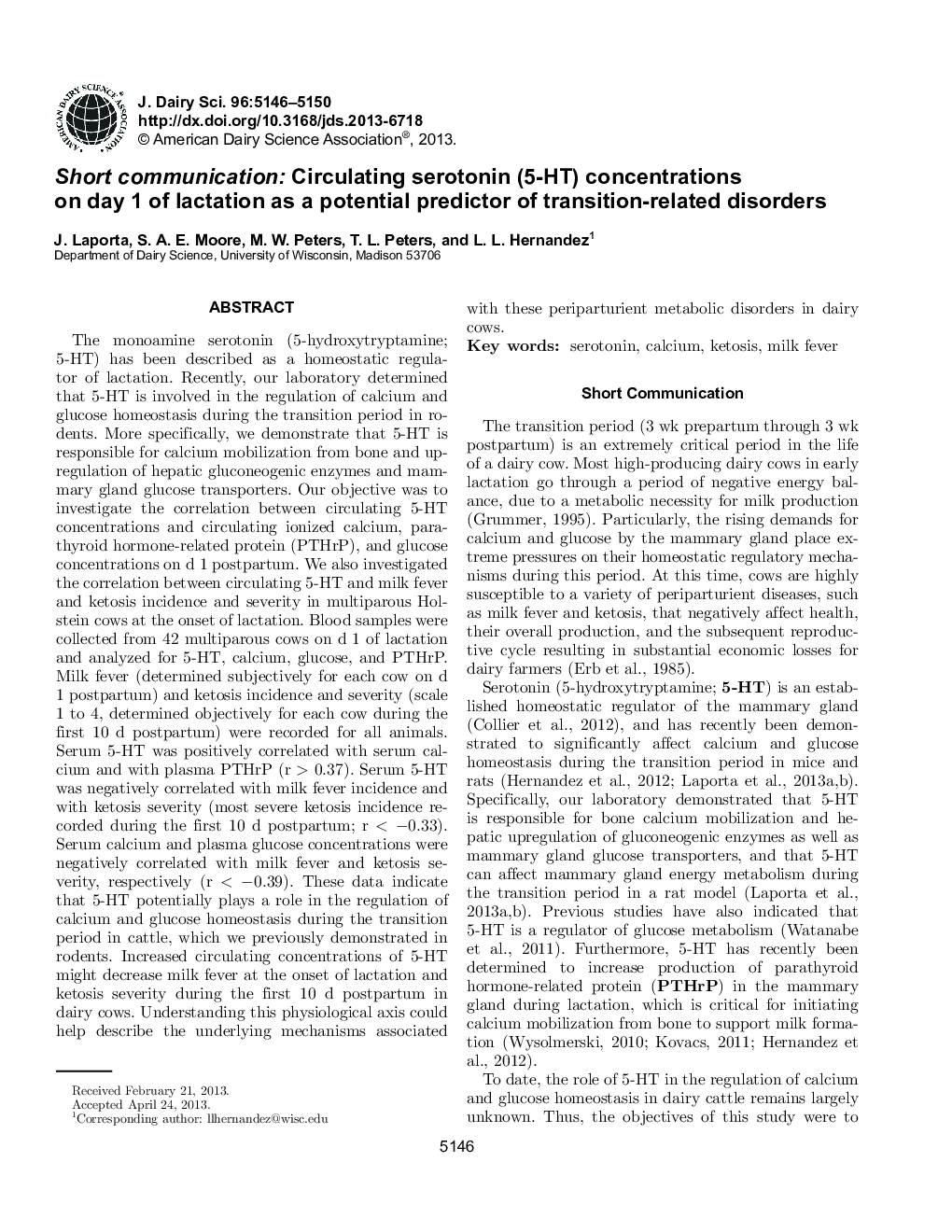| Article ID | Journal | Published Year | Pages | File Type |
|---|---|---|---|---|
| 2438894 | Journal of Dairy Science | 2013 | 5 Pages |
The monoamine serotonin (5-hydroxytryptamine; 5-HT) has been described as a homeostatic regulator of lactation. Recently, our laboratory determined that 5-HT is involved in the regulation of calcium and glucose homeostasis during the transition period in rodents. More specifically, we demonstrate that 5-HT is responsible for calcium mobilization from bone and upregulation of hepatic gluconeogenic enzymes and mammary gland glucose transporters. Our objective was to investigate the correlation between circulating 5-HT concentrations and circulating ionized calcium, parathyroid hormone-related protein (PTHrP), and glucose concentrations on d 1 postpartum. We also investigated the correlation between circulating 5-HT and milk fever and ketosis incidence and severity in multiparous Holstein cows at the onset of lactation. Blood samples were collected from 42 multiparous cows on d 1 of lactation and analyzed for 5-HT, calcium, glucose, and PTHrP. Milk fever (determined subjectively for each cow on d 1 postpartum) and ketosis incidence and severity (scale 1 to 4, determined objectively for each cow during the first 10 d postpartum) were recorded for all animals. Serum 5-HT was positively correlated with serum calcium and with plasma PTHrP (r > 0.37). Serum 5-HT was negatively correlated with milk fever incidence and with ketosis severity (most severe ketosis incidence recorded during the first 10 d postpartum; r < -0.33). Serum calcium and plasma glucose concentrations were negatively correlated with milk fever and ketosis severity, respectively (r < -0.39). These data indicate that 5-HT potentially plays a role in the regulation of calcium and glucose homeostasis during the transition period in cattle, which we previously demonstrated in rodents. Increased circulating concentrations of 5-HT might decrease milk fever at the onset of lactation and ketosis severity during the first 10 d postpartum in dairy cows. Understanding this physiological axis could help describe the underlying mechanisms associated with these periparturient metabolic disorders in dairy cows.
